North Korea: Pentagon addresses confusion over strike group
- Published
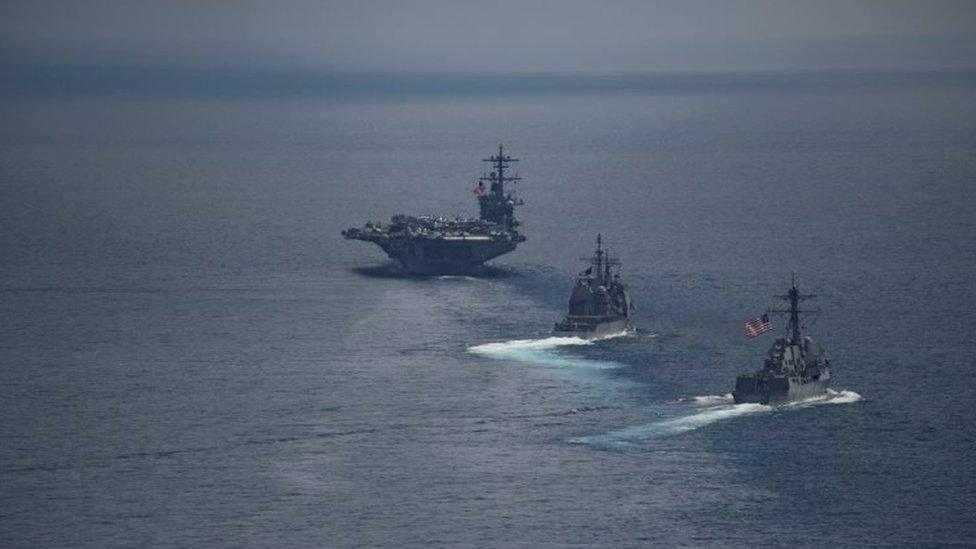
The USS Carl Vinson (left) and other warships were in the Indian Ocean over the weekend
US defence chiefs have been clarifying the whereabouts of warships that President Trump erroneously suggested last week were sailing for North Korea.
US Defence Secretary James Mattis said the USS Carl Vinson strike group is now proceeding to the Western Pacific.
The ship is part of what President Trump said last week was an "armada" being deployed off North Korea amid tensions over its nuclear plans.
But the vessels were heading the other way for training with Australia's navy.
South Korean media were incredulous, with one newspaper headline blaring, "Trump's Carl Vinson lie", external.
Joongang Daily likened the controversy to alleged "fake missiles" paraded through North Korea's capital.
Seeking to clear up confusion on Wednesday, the Pentagon chief said he wanted "to be open about what we're doing".
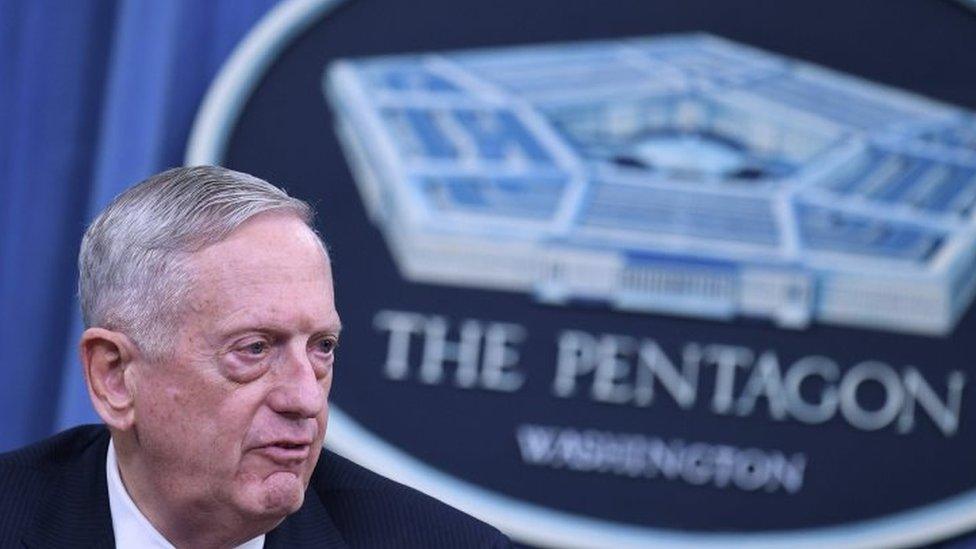
Mr Mattis has insisted the US is doing exactly what it said it would do in relation to North Korea
Speaking in Saudi Arabia, Mr Mattis said: "We're doing exactly what we said we're going to do. She will be on her way.
"And I'll determine when she gets there and where she actually operates - but the Vinson is going to be part of our ensuring that we stand by our allies in the north-west Pacific."
The confusion began on 9 April when the US Navy said the Carl Vinson strike group was travelling from Singapore to the Western Pacific.
Two days later, President Trump said in an interview with Fox Business: "We are sending an armada, very powerful" towards the Korean peninsula.
His remark stoked fears across East Asia that the US was poised for a pre-emptive military strike.
But rather than heading north to the Sea of Japan, on 13 April the Vinson was travelling in the opposite direction, south towards Australia, for a scheduled weekend exercise with that country's navy.
A US Navy photo dated 15 April showed the Nimitz-class nuclear-powered aircraft carrier heading through the Sunda Strait into the Indian Ocean.
The Vinson battle group is not expected to reach the Korean peninsula until next week.
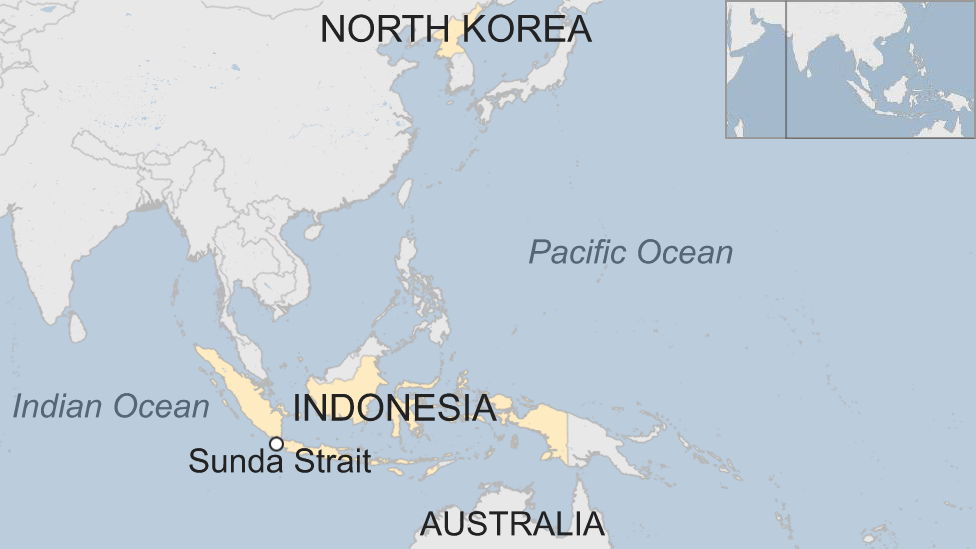
Questioned on Wednesday at the daily White House briefing, press secretary Sean Spicer insisted the administration did not mislead anyone.
"The president said we have an armada that's going toward the peninsula," Mr Spicer told reporters. "That's a fact, it happened. It is happening, rather."
The BBC's Korea correspondent, Stephen Evans, says it is not clear whether the mix-up was a deliberate deception, perhaps designed to frighten North Korea's leader Kim Jong-un, a change of plan or simple miscommunication.
But some questioned why the timeline was not corrected earlier given the tensions involving nuclear-armed North Korea.
On Tuesday, the Pentagon's chief spokeswoman, Dana White, conceded: "This should have been communicated more clearly at the time."
Some Chinese have taken to social media to tease the US.
"American imperialism is a paper tiger," said one user on Weibo, China's version of Twitter.
"The aircraft carrier was sleep-walking," joked another.

Timeline of recent tensions
8 April: The US military orders a navy strike group to move towards the Korean peninsula
11 April: North Korea says it will defend itself "by powerful force of arms"
15 April: North Korea puts on a huge military parade - complete with missiles - to mark 105th birthday of the nation's founding president, Kim Il-sung. Meanwhile US Vice-President Mike Pence arrives in South Korea
16 April: North Korea conducts a rocket test, but it fails
17 April: Senior North Korean official tells the BBC the country will continue to test missiles "weekly" and Mr Pence warns North Korea not to "test" Donald Trump
18 April: It emerges the US Navy strike group was not heading towards North Korea when US officials suggested it was
- Published19 April 2017
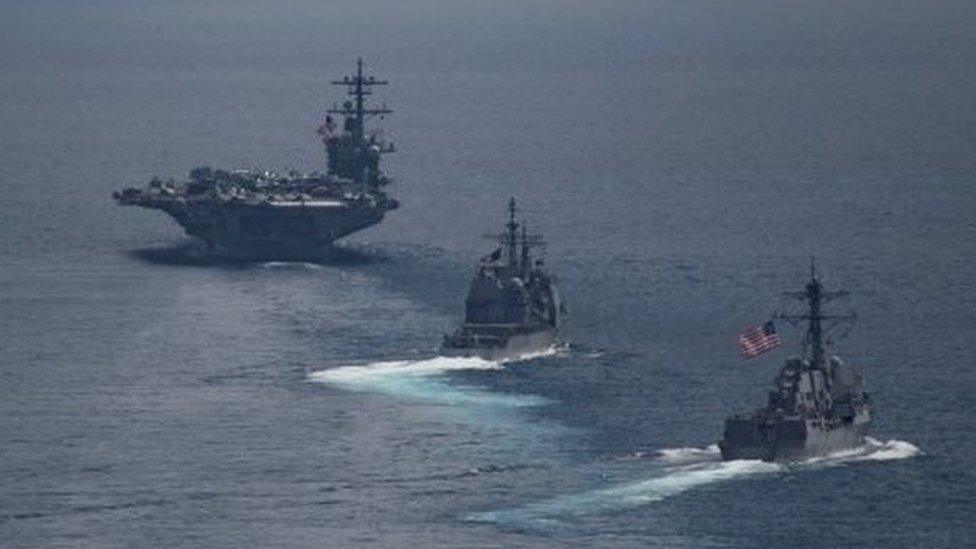
- Published19 April 2017
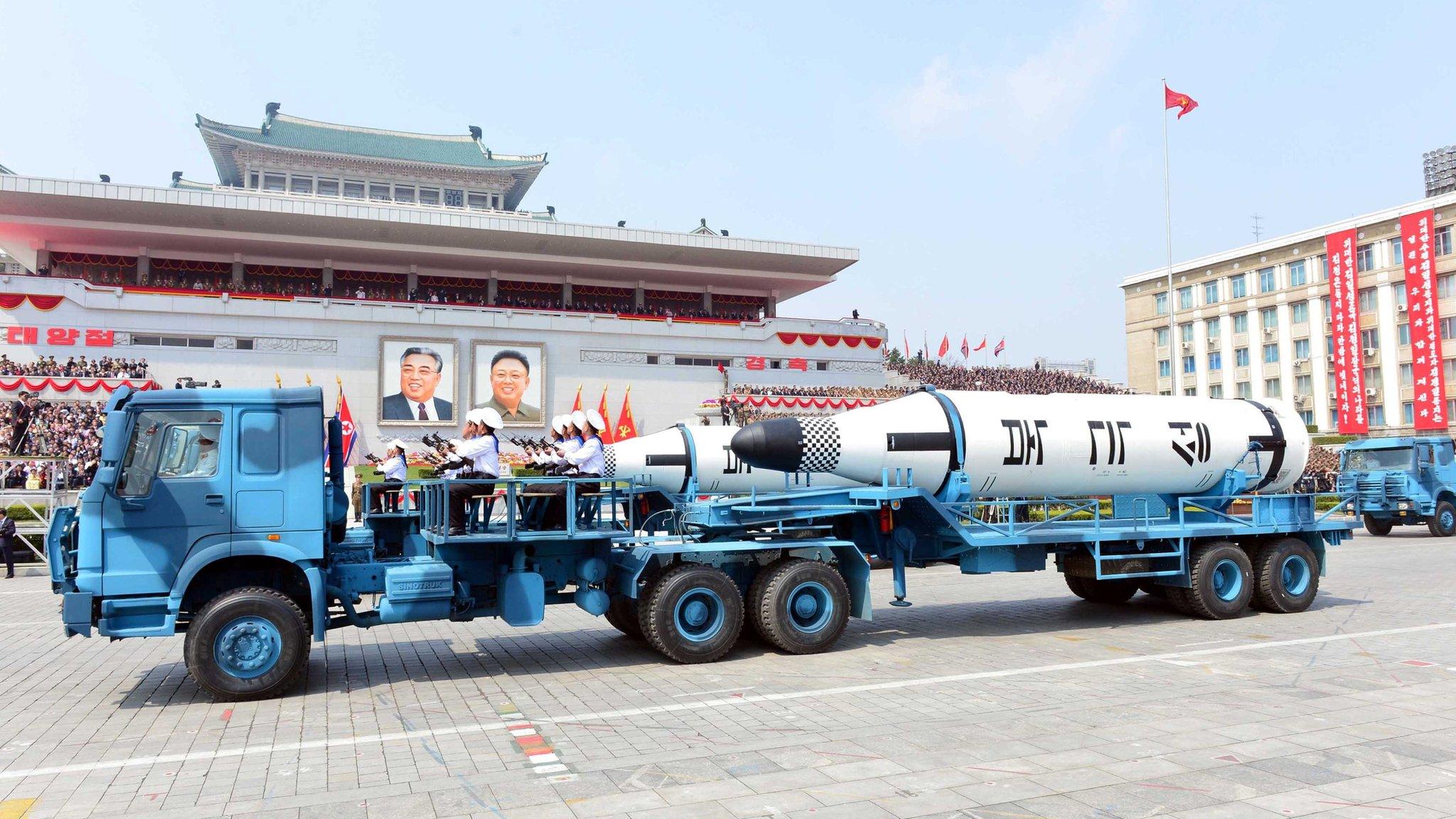
- Published18 April 2017
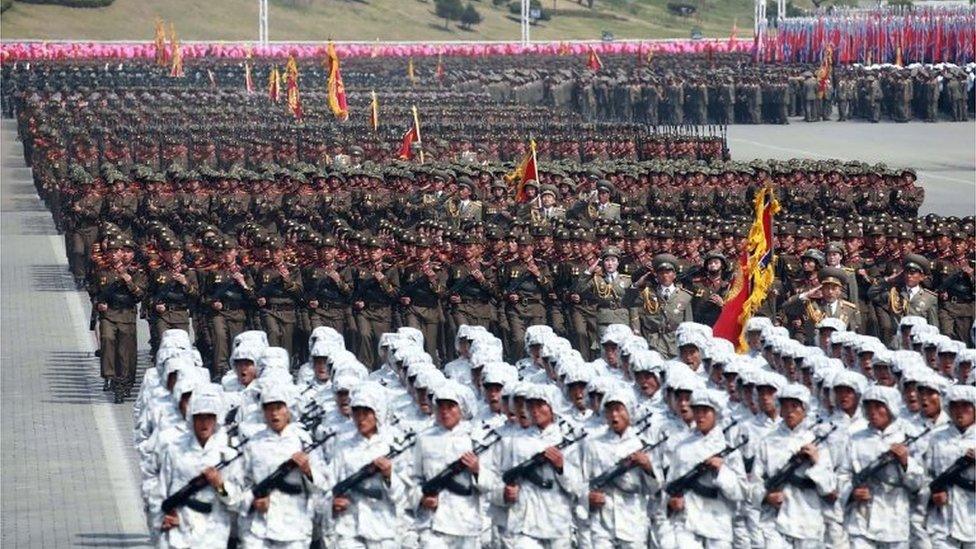
- Published4 July 2017

- Published15 April 2017
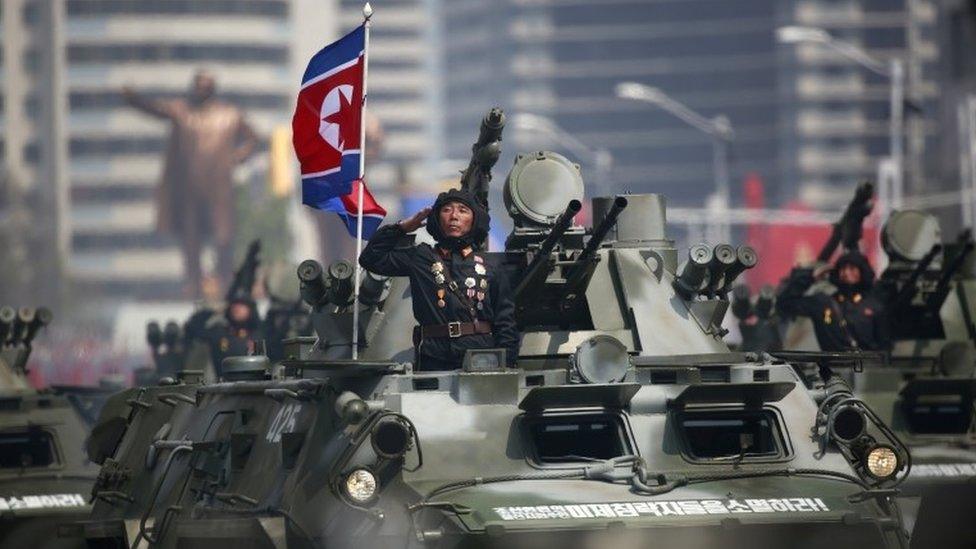
- Published10 August 2017